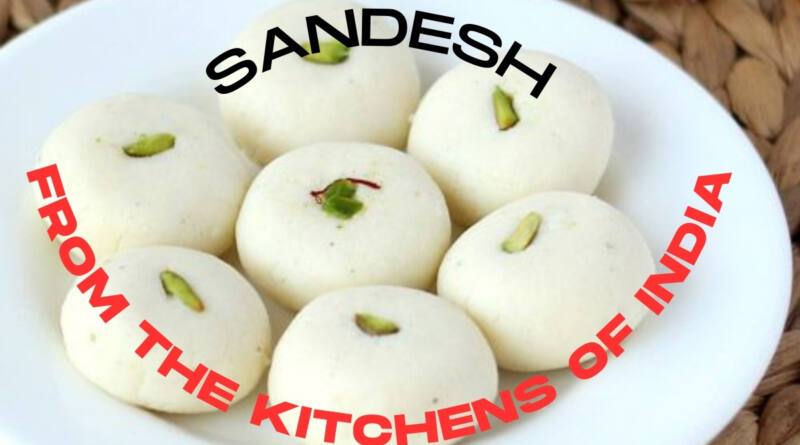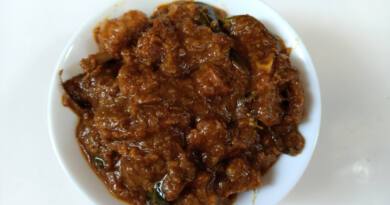Sandesh: From The Kitchens Of India
Sandesh is a popular traditional Bengali dessert that has a special position in Bengal’s culinary culture, which is located in Eastern India. This delightful candy is made mostly of chhana (curdled milk) and sugar, with flavour and texture variations.
During ancient times, the Indian subcontinent popularized milk-based sweets, and Sandesh’s origins can be traced back to this period. However, it wasn’t until the 16th century, during the time of the Bengal Sultanate, that Sandesh rose to prominence as one of Bengal’s most popular sweets. It gradually became a necessary sweet offering at festivals, festivities, and religious rites, as well as an integral aspect of Bengali cuisine.
Sandesh was traditionally made with only chhana and sugar, but over time, various flavours and ingredients were added, broadening its range and appeal. There are several different types of Sandesh available nowadays, including Nolen Gur Sandesh (made with date palm jaggery), Pista Sandesh (with pistachios), Kesar Sandesh (saffron-flavoured), and many more.
Cultural Importance: Sandesh has enormous cultural importance among Bengalis. It is a symbol of love, affection, and sharing one’s delight with others. In Bengali literature, poetry, and songs, Bengalis frequently mention Sandesh as a metaphor for sweetness, gentleness, and the essence of Bengali hospitality.
1. People frequently used the sweet to transport messages between individuals, which is why it gained its name “Sandesh.” Some believe that the sweet gained its name because people frequently used it to transport messages between individuals.
2. Sandesh is extremely adaptable and can be fashioned into a variety of shapes, ranging from basic round balls to elaborate designs created with moulds. Sandesh’s shape is termed “moulding.”
3. Kolkata (previously Calcutta) is famous for its delectable Sandesh. Sweet shops in Kolkata, such as K.C. Das, Bhim Nag, and Ganguram, have become famous for their ability to create delectable Sandesh.
4. Sandesh is not just popular in Bengal but also throughout India, particularly in areas with a large Bengali population.
5. Sandesh has evolved to suit the modern palate as the times have changed. Chocolate sandesh, mango sandesh, and even fusion combinations like paan (betel leaf) sandesh have become popular.
Sandesh is still revered by Bengalis as a symbol of their rich culinary heritage, and it has a global following for its delicate texture, exquisite flavours, and perfect balance of sweetness.
Here’s how to prepare Sandesh, a popular Bengali dessert, the traditional way:
- 2 litres of full-fat milk
- 1 lemon
- 1 cup powdered sugar; a few saffron strands (optional)
- 1 tablespoon pistachios, chopped (for garnish)
- 1 tablespoon chopped almonds (optional)
1. Begin by making the chhana (curdled milk). Pour the milk into a big pot and bring to a boil over medium heat. To keep the milk from sticking to the bottom of the pan, stir it occasionally.
2. While heating the milk, squeeze and filter the lemon. Set aside the lemon juice.
3. When the milk reaches a boil, remove it from the heat and set it aside for a minute. Then, while constantly whisking the milk, gradually add the lemon juice, a little at a time. The lemon juice’s acidity will curdle the milk and separate the whey.
4. Once the milk has completely curdled and the whey has separated, strain the mixture through a fine sieve or muslin cloth. Set aside the whey to be used in other dishes, such as making dough.
5. Rinse the chhana under cold running water to remove any lemon juice sourness. Gather the cloth’s corners and squeeze lightly to eliminate extra water.
6. Hang the chhana bundle for 30 minutes to absorb any remaining moisture. This produces a soft, crumbly chhana.
7. After 30 minutes, transfer the chhana to a clean, dry surface and knead it with your palm’s heel until it is smooth, creamy, and lump-free. This stage is critical for achieving the desired texture for Sandesh.
8. Transfer the kneaded chhana to a heavy-bottomed pan. Cook for about 5 minutes on low heat, stirring often.
Mix the powdered sugar until it is completely incorporated. Cook and stir for another 10–15 minutes, or until the mixture begins to leave the sides of the pan and forms a hard mass.
10. At this point, add a few strands of saffron soaked in a tablespoon of heated milk to improve the flavour and give the Sandesh a beautiful yellow colour. Combine this with the chhana mixture.
11. Remove from the fire and set aside for a few minutes to cool until the mixture is cold enough to touch.
12. Grease your palms with ghee or butter and scoop out a tiny amount of the hot Sandesh mixture. Make little, spherical Sandesh balls by rolling them between your palms. Moulds can also be used to form the Sandesh into various designs.
13. Decorate the Sandesh balls with chopped pistachios and almonds, carefully pressing them on top.
14. Refrigerate the Sandesh for about 1-2 hours to set and harden up.
The Sandesh is ready to serve once it has cooled and set. Enjoy this scrumptious Bengali sweet as a pleasant treat or on special occasions with friends and family!




